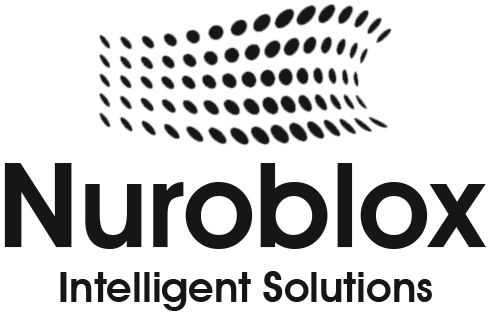How Regulated Industries Can Safely Adopt AI Automation
AI promises to transform regulated sectors from banking and healthcare to government and law by automating complex tasks and uncovering new insights. But because these industries deal with sensitive data and high-stakes decisions, they face intense oversight under laws like GDPR, HIPAA or sector-specific rules. As one study notes, “the demand for explainability has become both a technical necessity and a regulatory mandate” in domains like credit scoring, medical diagnoses and public services. In practice, this means decision-makers must balance innovation with strong safeguards for compliance, explainability, fairness, and data privacy.
This post explores why regulators hesitate, what opportunities AI offers, and how enterprises can adopt AI safely through best practices and real-world examples.
Why Regulated Industries Hesitate to Adopt AI
Regulated organizations proceed cautiously because AI can introduce new risks and uncertainties. Surveys show many firms lack clear plans: over half of North American financial and compliance professionals report no plans to use AI in compliance workflows in the next year. Key concerns include unclear regulations and the “black box” nature of AI models.
Compliance leaders worry about algorithmic bias, data breaches, and unpredictable outcomes. For example, one report highlights that North American firms feel regulatory “guardrails” are still missing, unlike in Europe where the upcoming AI Act offers clearer guidelines. In short, the fear of legal, ethical or reputational harm from a faulty AI system, such as violating privacy laws or making biased decisions, makes executives reluctant to jump in.
Opportunities AI Brings to Regulated Sectors
Responsible AI can also unlock substantial value for regulated industries. When well-governed, AI and generative models can accelerate routine tasks and provide deeper insights under compliance oversight. For example, banks are using AI-powered search and vector databases to make years of archived transaction records instantly searchable, dramatically speeding up audits and compliance reviews.
In life sciences, companies like Novo Nordisk have trimmed a 15-week report-writing pipeline to minutes by using AI to draft and verify clinical documentation. Insurance firms apply AI to triage claims and detect fraud more quickly, improving customer service while maintaining detailed audit trails. These innovations cut costs and free human experts to focus on higher-level work without sacrificing compliance.
AI-driven analytics can scan vast, complex datasets to flag patterns or risks that humans might miss. For instance, financial institutions are piloting “virtual expert” assistants: AI tools trained on regulatory documents and transaction data to answer compliance questions or alert managers to anomalies. Generative AI can also auto-generate elements like suspicious-activity reports or credit risk summaries, and even update code or policies for changing regulations.
Analysts estimate these AI applications could add $200–$340 billion per year in value to banking by automating routine compliance tasks and report generation. In all these cases, AI expands capabilities: it speeds decision making, enhances accuracy, and reduces manual workload, as long as outputs remain auditable and within regulatory bounds.
Best Practices for Safe AI Adoption
To harvest AI’s benefits safely, regulated enterprises should follow proven governance and risk management practices
1. Stay Current on Regulations- Thoroughly map relevant laws (GDPR, HIPAA, PCI-DSS, EU AI Act, etc.) and industry guidelines. Assign teams to monitor changes so AI projects evolve with the rules.
2. Implement an AI Risk Management Framework- Build on standards like NIST’s AI Risk Management Framework or ISO 42001. Identify AI-specific risks (data privacy, algorithmic bias, security vulnerabilities) and assess their impact. For each use case, document risk-mitigation steps (e.g. input controls, fallback plans) and maintain clear accountability.
3. Adopt Ethical AI Guidelines- Define corporate principles for AI, covering fairness, transparency, and accountability. Incorporate bias-detection tests and remediation (e.g. balanced training data, fairness metrics) into model development. Ensure all stakeholders (developers, legal, compliance) agree on acceptable use and review paths for AI decisions.
4. Ensure Explainability- Favor models or techniques that provide insights into decision logic. Use explainability tools (like LIME or SHAP) to generate human-readable explanations of outputs. Maintain documentation (model cards, decision logs) so auditors or regulators can understand how AI arrived at key conclusions. Keep humans “in the loop” for critical decisions, as required by GDPR (Article 22) and similar laws.
5. Enforce Strong Data Governance- Since AI depends on data, implement robust controls over data quality and privacy. Maintain accurate, well-documented datasets with proper ownership and access controls. Use encryption and anonymization (e.g. differential privacy techniques) to protect sensitive records during training and inference. Apply the “minimum necessary” principle to ensure models use only data needed for their purpose.
6. Regular Audits and Monitoring- Continuously test AI systems against performance and compliance metrics. Run periodic audits to detect drift, bias or security flaws, and update models as needed. Consider leveraging AI-based monitoring tools that can scan outputs for anomalies and automatically flag compliance breaches.
7. Vendor and Third-Party Oversight- Perform due diligence on any AI solution providers or libraries. Require assurances (and legal agreements) that third-party models meet your regulatory standards. Monitor updates or changes from external vendors for new risks.
8. Governance Structure and Culture- Assign clear responsibility for AI governance. Form an AI oversight committee or executive sponsor. Align AI strategy with business goals and compliance needs. Train staff on AI ethics and risks, and foster a culture where employees are encouraged to question AI outputs.
9. Stay Agile and Collaborative- As technology and regulations evolve, be prepared to adapt. Participate in industry consortia and dialogue with regulators. Share lessons learned and best practices; collectively developing standards (such as sector-specific AI safety guidelines) strengthens everyone’s ability to comply.
By integrating these practices, essentially “privacy by design” and “ethics by design,” organizations build trust in AI while meeting legal requirements. Notably, standards bodies emphasize this: NIST’s AI Risk Management Framework is explicitly intended to help organizations “incorporate trustworthiness considerations into the design, development, use, and evaluation of AI”.
How Enterprises Are Doing It Right (Examples/Case Studies)
Finance – Explainable Credit Scoring- A European bank developed an AI-driven credit scoring model using SHAP (SHapley Additive exPlanations) to reveal how each input (income, credit history, etc.) influenced a lending decision. This transparency helped the bank align with GDPR’s “right to explanation” and significantly reduced borrower disputes. By combining AI with explainability techniques, they achieved faster loan processing without losing auditability.

Healthcare – Transparent Diagnostics- When IBM’s Watson for Oncology generated treatment suggestions, clinicians demanded clear rationale. In response, some healthcare providers now pair AI outputs with visual explanations. For example, AI image-analysis tools highlight areas of X-ray scans that triggered a diagnosis (“heatmaps”). Similarly, conversational AI assistants in hospitals provide summaries of source data and confidence scores alongside recommendations. These measures have made AI more acceptable to medical staff and regulators by showing why an AI reached a conclusion.
Government – Algorithmic Transparency- The UK’s new framework for public-sector AI mandates that any automated decision impacting citizens be accompanied by an explanation and audit trail. In practice, city agencies are publishing “model cards” for algorithms used in welfare or policing decisions, detailing inputs, data sources, and known limitations. Early applications, such as an automated system for resource allocation in social services, include oversight committees that regularly review AI decisions for fairness and compliance. This open approach boosts public trust while allowing AI to improve service efficiency.
Insurance – Automated Claims with Audits- Insurance companies are embedding AI into claims processing but instrumenting every step. For instance, an insurer uses AI to flag potentially fraudulent claims, yet every AI decision is accompanied by a record of which rules and data points were applied. Human adjusters review these flags with the context provided by the AI (e.g. “this claim was flagged due to an unusual address and amount”), ensuring both speed and accountability. This hybrid model satisfies regulators that decisions can be traced and contested if necessary.
Cross-Sector (Governance) – Federated AI for Privacy- In a novel collaboration, SwissMedic (Switzerland’s medical regulator) partnered with U.S. and Danish agencies to improve medical device incident reporting. They deployed a federated learning approach so each agency’s data stayed local, but a shared AI model was trained on all datasets jointly. By design, no raw patient data was exchanged; only model updates were shared, preserving privacy while building a stronger risk assessment tool. This shows how privacy-preserving AI techniques can enable innovation without breaching regulations.
Each of these cases demonstrates that regulated enterprises can harness AI effectively by pairing it with strong oversight. Centralizing AI governance (as many banks do) often helps – for instance, risk teams can oversee all AI pilots and ensure consistent standards. Banks that set up centralized AI centers report smoother compliance management and faster scaling of AI projects.
Ultimately, these examples prove that with the right structures and technologies (from explainable models to encrypted data sharing), organizations can innovate confidently under the regulator’s gaze.
Conclusion
AI automation can be safely adopted in regulated industries, but only with care. Leaders must invest in explainability, compliance and ethical guardrails from the start. This means aligning AI initiatives with evolving laws (for example, the EU AI Act’s requirements for technical documentation and human oversight), and building transparent AI pipelines. According to McKinsey, very few firms today have enterprise-wide AI governance councils, yet regulators expect robust accountability. Following structured frameworks and continuously auditing AI will help bridge this gap.
Organizations should also leverage emerging technologies to stay ahead. Secure ML techniques (like federated learning or differential privacy) enable innovation without compromising data privacy. At the same time, AI itself can aid compliance by detecting drifts or vulnerabilities in other AI models. By combining these approaches, industries subject to strict oversight can realize AI’s benefits faster service, better decisions, cost savings while satisfying regulators and the public.
In short, regulated enterprises need not fear AI. With deliberate governance, continuous risk management, and transparent practices, AI becomes a trusted tool, not a liability. As NIST advises, embedding trust and accountability into AI workflows is the path to “improved economic growth” without sacrificing compliance. By following these best practices, decision-makers can confidently integrate AI into finance, healthcare, legal and government functions, unlocking innovation that drives efficiency and better outcomes within the rule of law.


